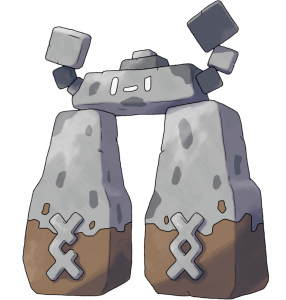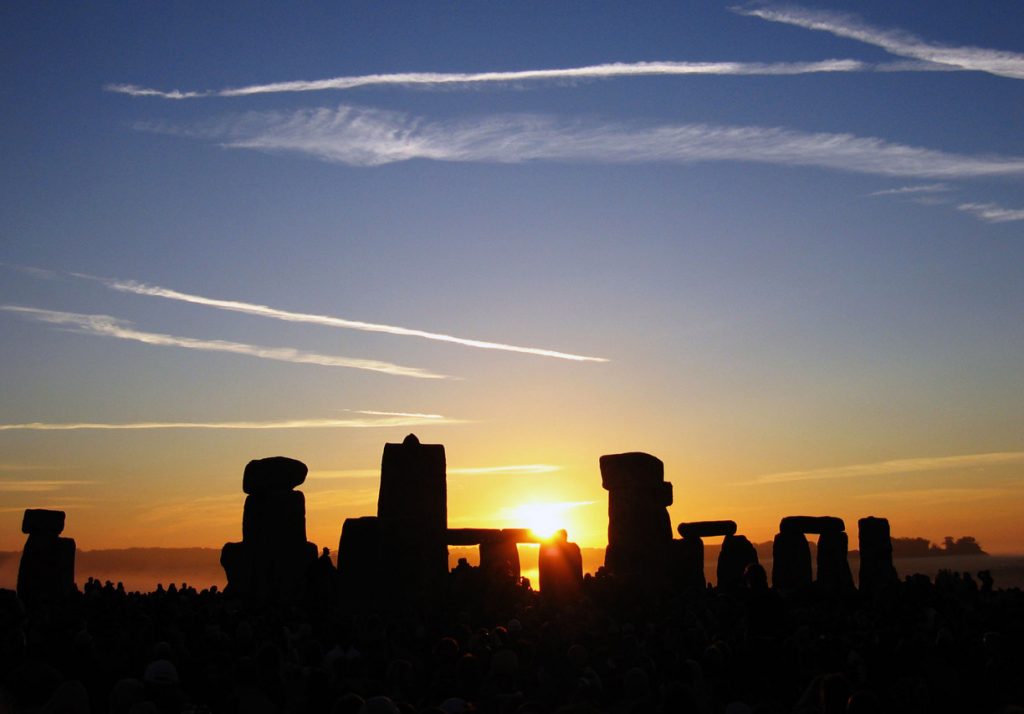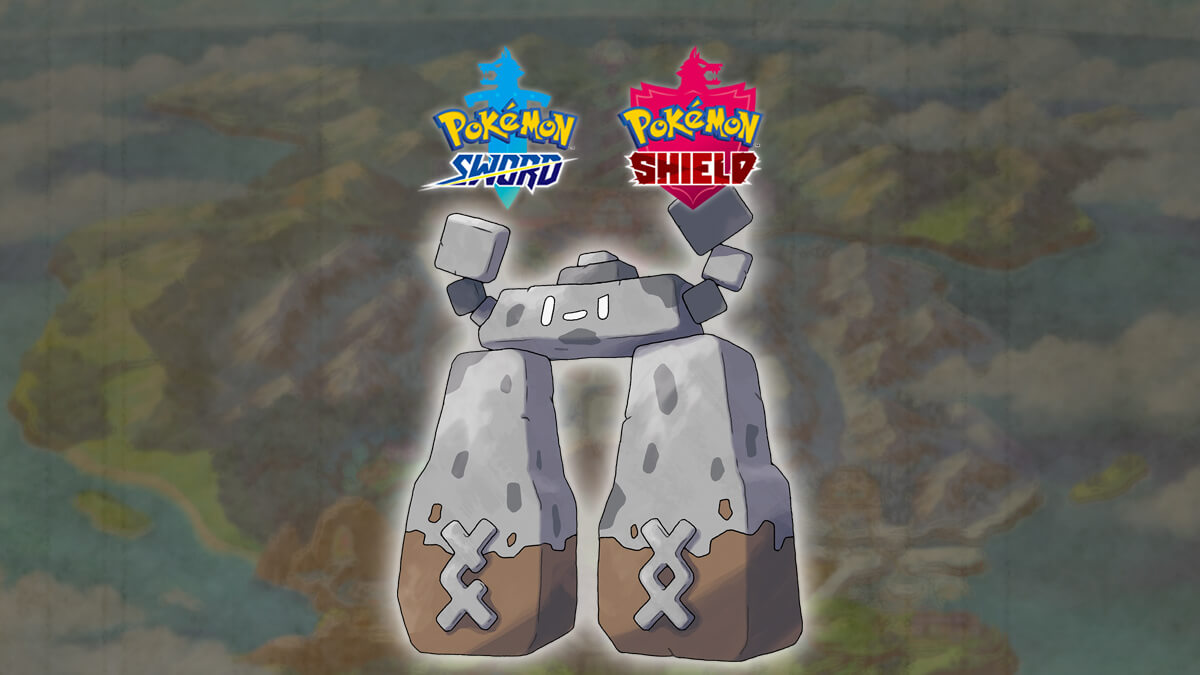In this recurring series, I’ll analyze the origins of Pokémon designs, their culture, and their historical allusions to British culture.
The Big Rock Pokémon

Stonjourner is a single-stage Rock-type Pokémon that looks like a stone arch or a stone golem. Its body is a series of connected rocks, a trilithon, that make up its arms, head, and legs. Its legs have symbols vaguely resembling Celtic symbols and appears to have tracked some mud. Its name seems to be a combination of “stone” and “sojourner”, a temporary resident.
Its design is based on Stonehenge, a famous rock formation of stones placed in a ring in the plains of England, with a second inner ring. Archaeologists believe the formation was constructed between 3000 – 2000 BC by the people who lived there at the time.
It has long been the stuff of legends and myths, with its full purpose unclear. The Celtics and druids who lived in Great Britain at the time had not left a great deal of historical artifacts. As Great Britain and the United Kingdom were beginning to form a cultural identity and mythos, the existence of Stonehenge led to artistic depictions around the seventeenth century. Legends and speculation continue to this day, with some suggesting that it was constructed by aliens.
We do know that the indigenous people had some understanding of the solar year. Archaeoastronomic studies of the rocks do show a connection to the annual solstices. On the summer solstice, the longest day of the year, the sunrise closely aligns with the heel stone, shining through the trilithon. It’s possible that the formation served as a kind of simple calendar for the civilization.

Excavations of the area around it have found bones of ancient people who had been buried, leading to the theory that it also served as a burial site. Perhaps there was religious significance to the rocks, where those who were buried there were blessed in some manner. Despite centuries of theories, we don’t have a definitive answer.
The concept of Stonehenge in popular culture is worldwide though, with many replicas being created for tourists or for art, made of stones, foam, or other materials.
Identifying a solstice may have had more significance in the past, before we had accurate and precise timekeeping. Synchronizing time was more complicated, but necessary in order to know when to plant crops and when to harvest. Culturally, the solstices may have also been holidays to reflect on another year gone by.

Alignment with the sun is a phenomenon that has been done in other places as well. In New York City, which is built on a grid system, there are days each year when the sunrise and sunset perfectly align with the streets, allowing you to see the sun’s movement straight through the city. This is known as Manhattanhenge, and is more of a consequence of a grid design than any larger significance. Similar phenomenon also exists in similarly designed cities, where a straight street provides an unobstructed view of the sun.
It stands in grasslands, watching the sun’s descent from zenith to horizon. This Pokémon has a talent for delivering dynamic kicks.
Once a year, on a specific date and at a specific time, they gather out of nowhere and form up in a circle.
Stonjourner’s Pokédex entries likewise show its connection with the sunset. Once a year, likely connected to the solstice, they will gather in a circle. This is directly a connection to the alignment of the Stonehenge stones. Its vagabond nature alludes to its name of “sojourner”, where they appear temporarily and then leave.
Conclusion
Stonehenge is one of the most famous landmarks in England, and was given historical protection status in the late nineteenth century. It is not surprising that it was represented in a Pokémon design. Its design is very close to an anthropomorphized trilithon with a strong set of legs. Its own behavior closely reflects our current understanding of the purpose of Stonehenge.
While theories about this landmark will continue, it remains to be seen if this is the last we’ll hear of Stonjourner. Perhaps we will see some of these theories get more credence in the Pokémon franchise in the future.
Leave your thoughts in the comments below or join the discussion on Discord!
PSST! Don’t miss your chance to enter June’s Pokémon plushie giveaway!










